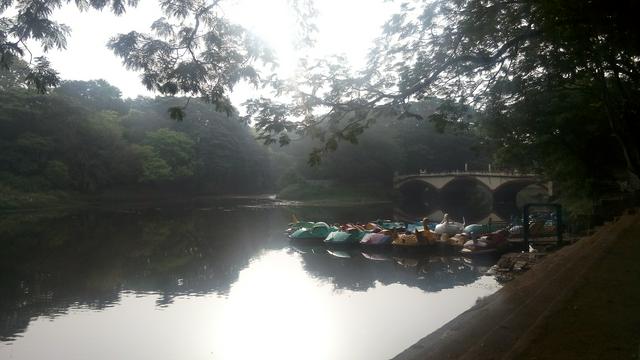
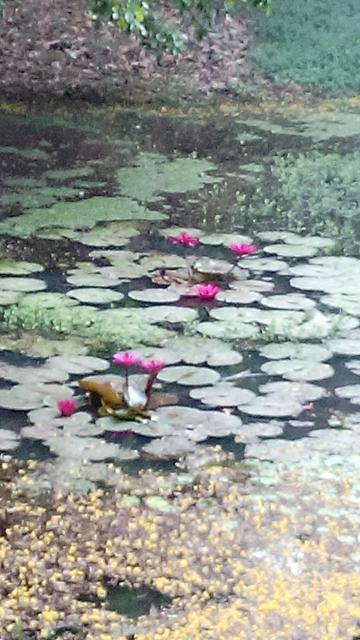 Sanjay Gandhi National Park is said to be one of the most visited national parks in Asia. According to estimates, around 2 million visitors visit this park annually. Collection at the gates in November 2004 touched .
Sanjay Gandhi National Park is said to be one of the most visited national parks in Asia. According to estimates, around 2 million visitors visit this park annually. Collection at the gates in November 2004 touched .
The Krishnagiri Upavan is an area of approximately 5.5km2 reserved as an easily accessible public recreation zone inside the park, while access to the remaining area is restricted. Among the several attractions of the Krishnagiri Upavan is a mini-zoo, a crocodile park and lion and tiger safaris through the natural habitats of these animals. A narrow-gauge train travels around the tourist zone showcasing parts of the forest's rich biodiversity. Boating facilities such as two-person, pedal-powered boats are available for a nominal fee. Two watchtowers afford panoramic views of the park.
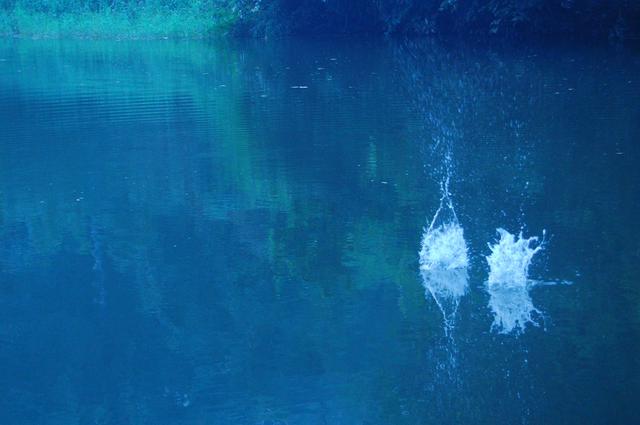 Hundreds of thousands of visitors travel to the Kanheri Caves, especially during festivals such as Maha Shivaratri. Nature trails and treks are also popular. Rock climbing enthusiasts often visit the national park as the numerous rock faces there and at the Kanheri Caves offer a great opportunity for rock climbers. The national park witnesses thousands of morning walkers every day, as the elderly, the youth, and children visit it for a breath of fresh air. It is also an abode for sports lovers who can be seen practicing cricket, badminton, and even marathons among other sports. Regulars opt for a nominal annual fee, and senior citizens are offered discounted rates. There are many smaller parks within the national park with flower gardens, mini-waterfalls, resting spots, sunrise/sunset views, the occasional deer and the misty boating lake.
Hundreds of thousands of visitors travel to the Kanheri Caves, especially during festivals such as Maha Shivaratri. Nature trails and treks are also popular. Rock climbing enthusiasts often visit the national park as the numerous rock faces there and at the Kanheri Caves offer a great opportunity for rock climbers. The national park witnesses thousands of morning walkers every day, as the elderly, the youth, and children visit it for a breath of fresh air. It is also an abode for sports lovers who can be seen practicing cricket, badminton, and even marathons among other sports. Regulars opt for a nominal annual fee, and senior citizens are offered discounted rates. There are many smaller parks within the national park with flower gardens, mini-waterfalls, resting spots, sunrise/sunset views, the occasional deer and the misty boating lake.
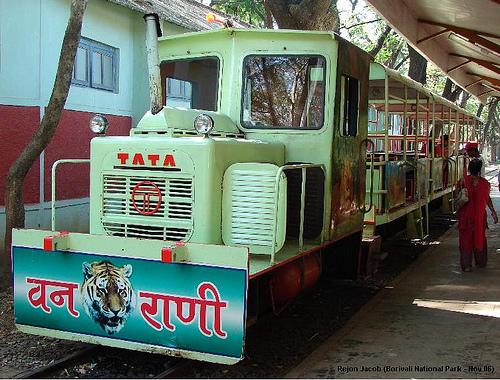 The park also features a "toy train" that runs on a narrow gauge railway. Named Van Rani, which means "jungle queen," it was operational for about twenty-five years before it was discontinued in 2001 because of the poor condition of the track. The circuitous route covers a 2.5km distance. However, in 2004, fresh bids were announced for the repair of the track, which was estimated to cost around . The tracks were repaired and the train was restarted. It offers a 15-minute ride along the foothills of the Mahatma Gandhi Memorial at 190m Pavilion Hill, traverses a couple of bridges and tunnels, and passes over the Deer Park.
The park also features a "toy train" that runs on a narrow gauge railway. Named Van Rani, which means "jungle queen," it was operational for about twenty-five years before it was discontinued in 2001 because of the poor condition of the track. The circuitous route covers a 2.5km distance. However, in 2004, fresh bids were announced for the repair of the track, which was estimated to cost around . The tracks were repaired and the train was restarted. It offers a 15-minute ride along the foothills of the Mahatma Gandhi Memorial at 190m Pavilion Hill, traverses a couple of bridges and tunnels, and passes over the Deer Park.
Boating services are available near the Van Rani starting point with 2- and 4-seater pedalos for sailing in the small lake, which has a view bridge where visitors can stand and watch the boats in the water.
Main attractions of the park are lion and tiger safaris for encouraging eco-tourism. The lion safari is a 20-minute ride through a 12ha fenced forest area in one of the park's green buses. The park is home to an estimated 25 lions and lionesses, of which only 2 can be safely seen at close range from the caged buses. The remaining 23 have been relocated or placed in fenced areas far away from the roads used by the green buses. During visiting hours, some of the resident lions are let out into the enclosure, and can be viewed from the safety of the bus. There are 4 tigers that are kept semi-confined in a 20ha fenced area that is toured by the buses. A 5m high and 2200m long protective fencing surrounds the area. This is done so that all visitors can safely view lions and tigers in their natural habitat. Here the visitors are caged in the bus so the big cats can roam like in the wild. Two other tigers roam in a much larger area. There are many claims that these tigers and lions are tranquilized in the interests of tourism.
There are several public walking trails in the national park. The popular Ashok Van trail winds through thick forest to a dense cluster of Ashoka trees that are a welcome halfway resting spot. The return journey is usually via the Gaumukh trail that leads to an open volcanic rock face and ends at the Kanheri caves. A more challenging route is called the 'View Point' trail and leads to the highest point in Mumbai, which affords a panoramic view of the city and its three lakes – Tulsi Lake, Vihar Lake and Powai Lake. New jungle trails at Sanjay Gandhi National Park allow visitors to see the more unexplored parts of the park for a nominal fee. They are the 4km Shilonda Trail, the 5km Malad Trail, and the 6km Yeoor Trail.
Local conservation NGOs such as the Bombay Natural History Society (BNHS) and World Wide Fund for Nature - India (WWF-India) bring groups of urban residents from Mumbai and elsewhere, sometimes in collaboration with other organisations, for regular guided nature education walks in the nature trails of Sanjay Gandhi National Park and organise special trips when the rare karvi flowers are in full bloom which only happens once every eight years.
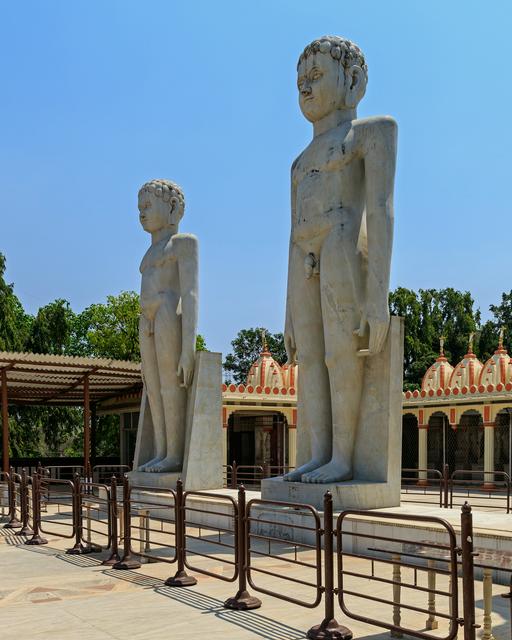
- Trimurti Temple
The Kanheri Caves are a protected archaeological site at . The caves were sculpted by Buddhist residents around the 1st century BCE. The area was a settlement that once served as inns for travelers. The word Kanheri comes from the Sanskrit word Krishnagiri which means "black mountain".
- Buddhist Viharas
Seven Buddhist caves older than Kanheri Caves have also been discovered very recently. Detailed exploration and documentation is awaited from The Archaeological Survey of India.
